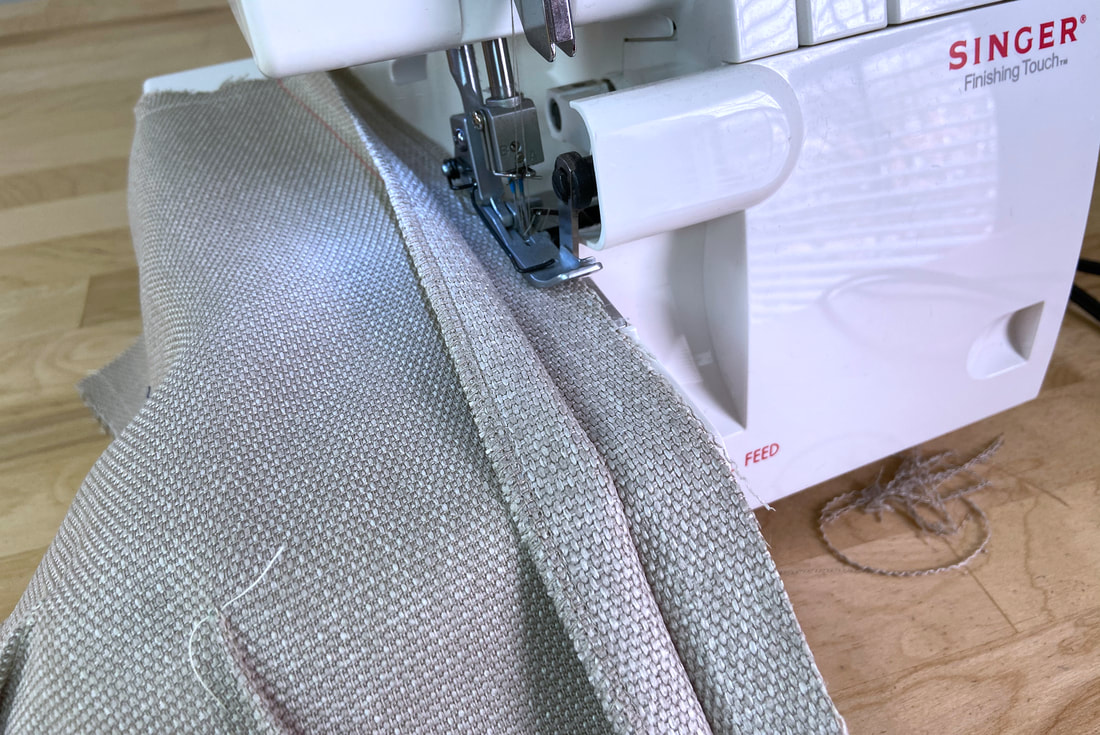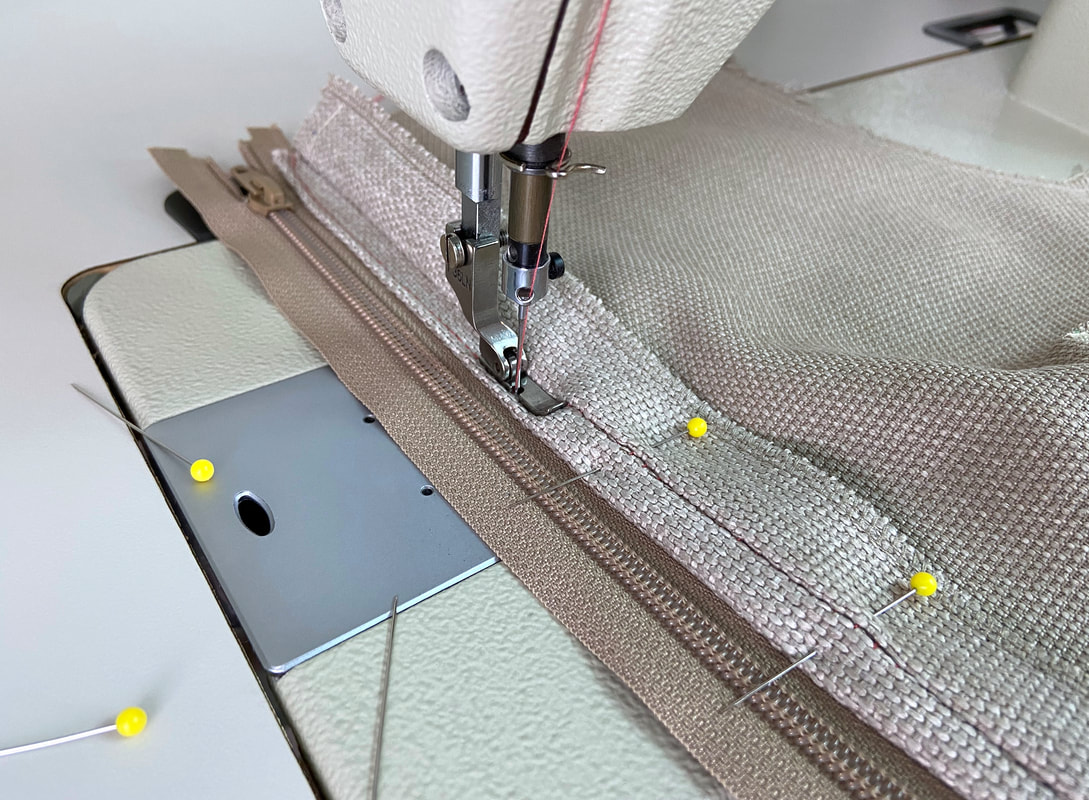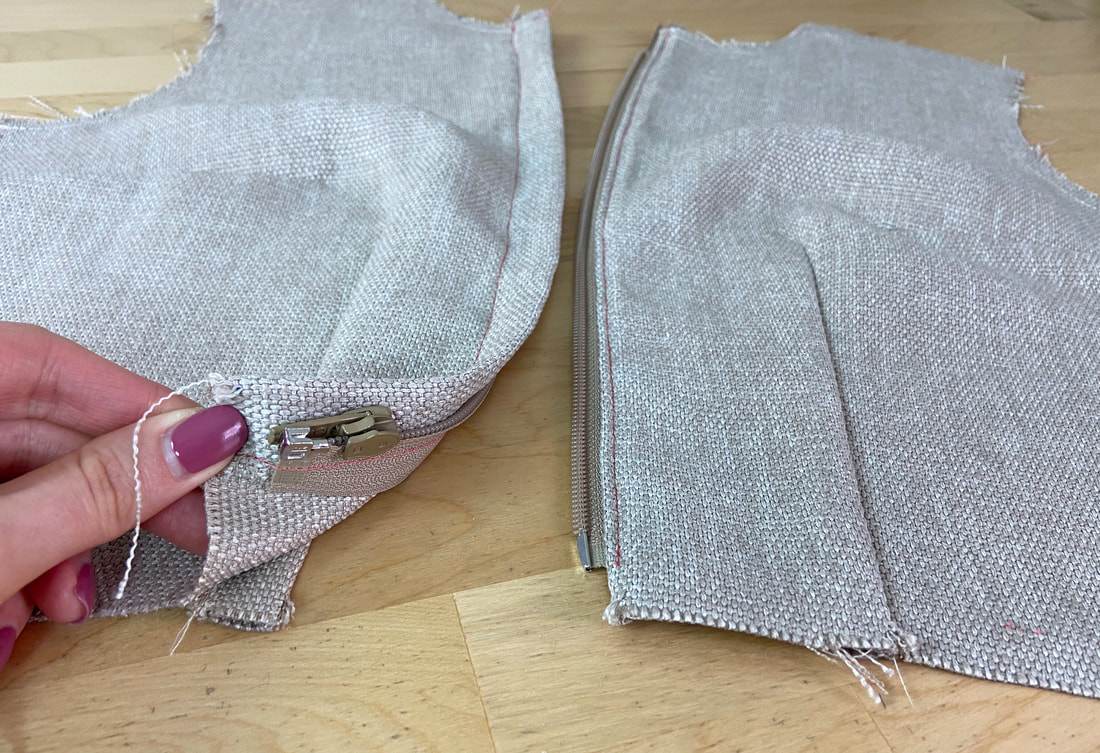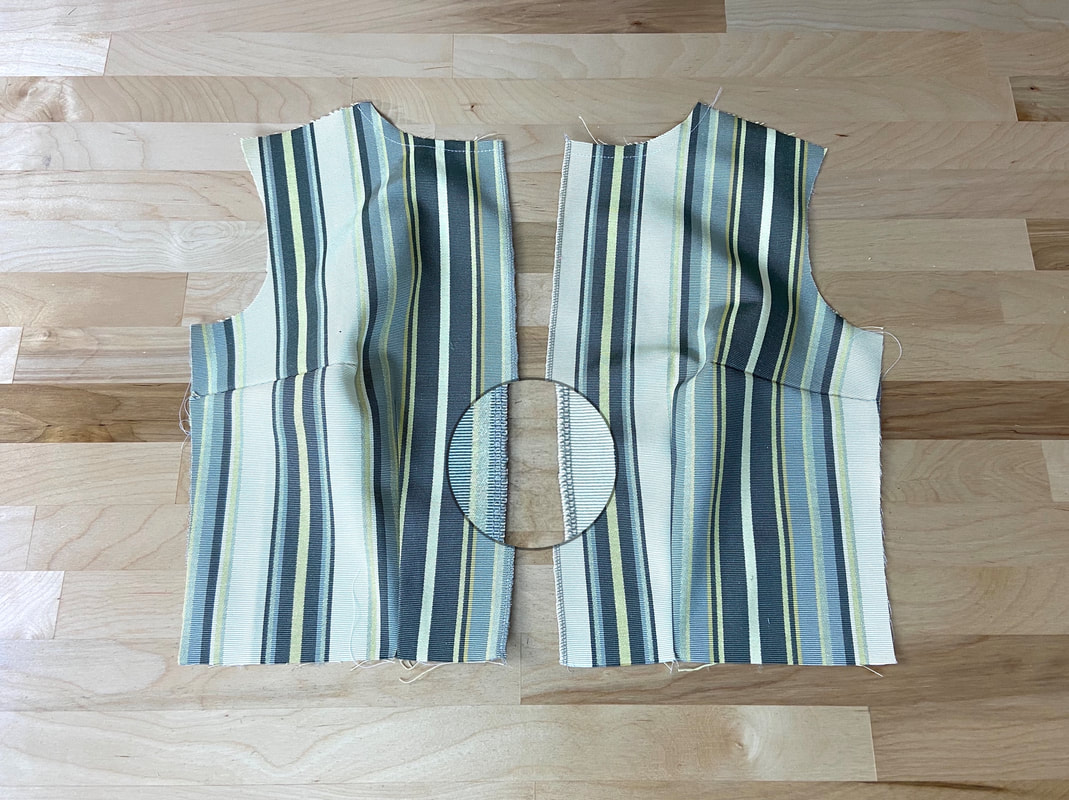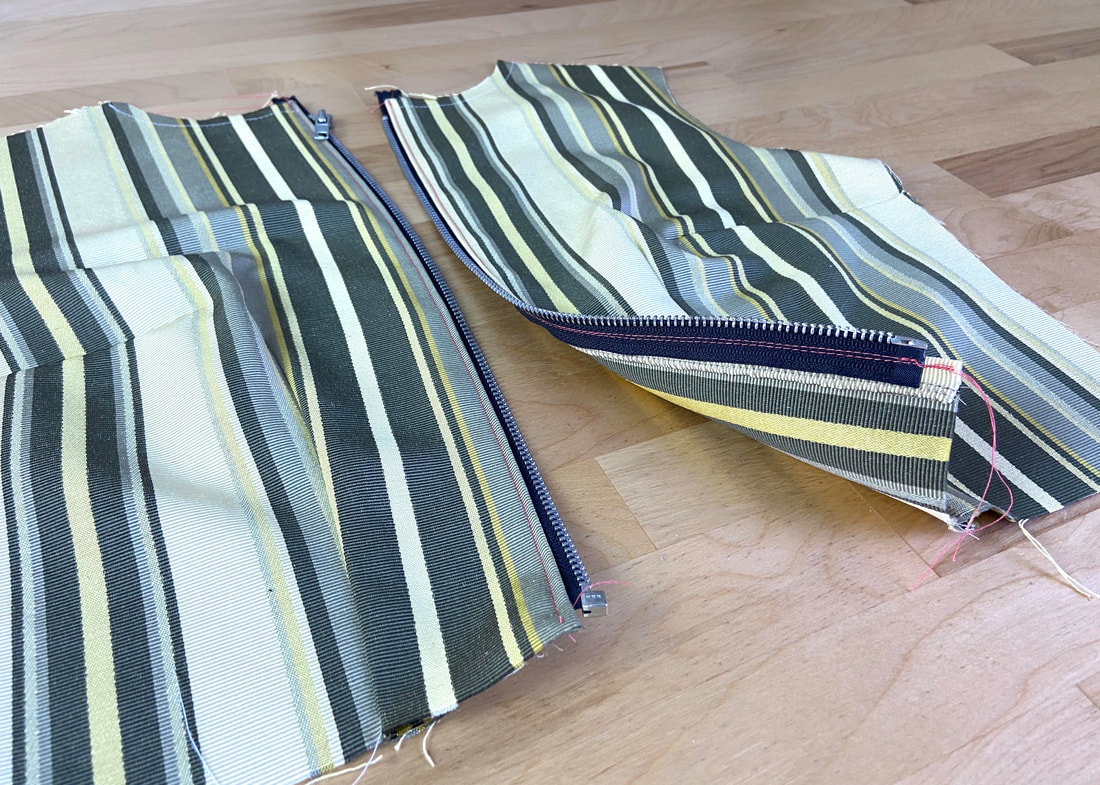Sewing Tip: Finish Seam Raw Edges Before Attaching Front-Opening Zippers
When sewing fully separating front zipper applications (usually to the front garment opening), it is always more efficient to clean-finish each garment raw edge individually prior to attaching the zipper.
Unless otherwise specified by your project, the simplest way to finish fabric edges and prevent from fraying is by using an overedge stitch like serging or zigzag (available on your home sewing machine).
In the example pictured above, a placket enclosed separating zipper will be stitched to the garment's front opening. After the seam edges have been machine-basted together (to aid in the zipper alignment process), each individual edge is serged to prevent it from weakening and fraying during the application process as well as throughout the garment's lifecycle.
In the example pictured above, a placket enclosed separating zipper will be stitched to the garment's front opening. After the seam edges have been machine-basted together (to aid in the zipper alignment process), each individual edge is serged to prevent it from weakening and fraying during the application process as well as throughout the garment's lifecycle.
The zipper then goes through its construction process as determined by the type of zipper application used. You'll notice that if you finish each raw edge prior to aligning and stitching the zipper, you'll feel a lot more comfort and stability when handling the seam edges in the construction process - the threads won't unravel uncontrollably and the edges will not stretch out-of-shape.
You'll also find that with most separating zipper applications, the zipper tape is aligned such that clean-finishing the garment's raw edges after the zipper has been permanently attached is virtually impossible, unless the garment is faced or lined. In this case, the zipper tape portions are often stitched or topstitched close to the seam allowance edges which does not allow enough space to handle these edges individually for clean-finishing after the zipper has been permanently attached.
Follow the same logic if sewing exposed separating zippers: In this instance, the garment edges are handled individually during the zipper application process.
If the finished zipper has been topstitched, as is often the case with exposed separating zippers, the seam allowance edges will be difficult to reach and handle in the clean-finishing process. That being said, it helps to finish each seam edge separately prior to aligning and stitching the zipper. In the example pictured above, a simple serging stitch is used to encase all raw fabric edges.
If the finished zipper has been topstitched, as is often the case with exposed separating zippers, the seam allowance edges will be difficult to reach and handle in the clean-finishing process. That being said, it helps to finish each seam edge separately prior to aligning and stitching the zipper. In the example pictured above, a simple serging stitch is used to encase all raw fabric edges.

